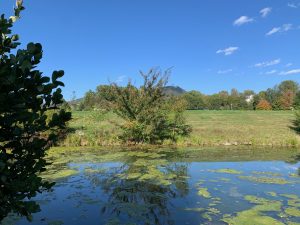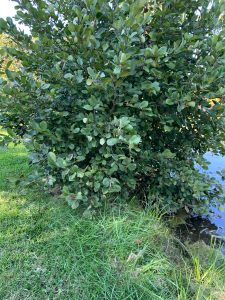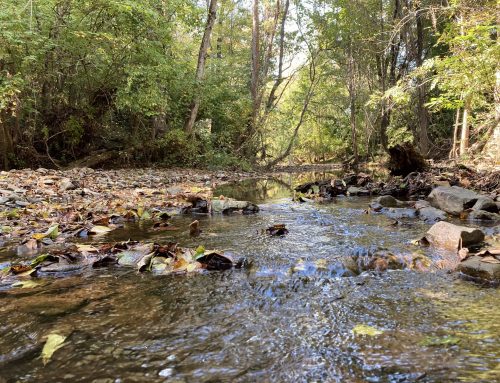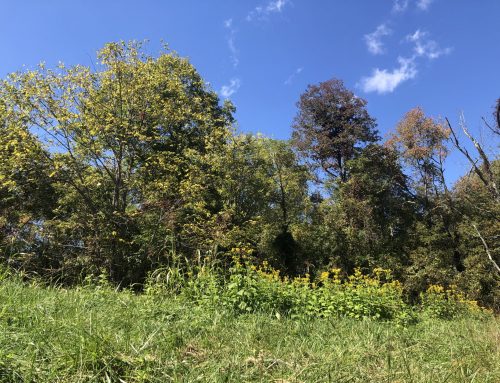It was colder outside than last time, and I brought a sweater. Initially sitting down in my spot, I noticed an increase in algae growth. There was also more leaf litter in the water as the trees surrounding the pond have begun to change color and lose their leaves. The bugs that were previously very abundant had seemed to die down, aside from numerous orange dragonflies that flew around the grassy patch in front of me. There were more birds calling, and I saw many fly by me, traveling towards the south. I saw less activity from the fish in the pond, which could be due to changing temperatures, or simply visiting a different time of day. I wish I knew more about the adage growing in the pond and what role it played in the immediate area’s ecosystem.
I decided to choose the invertebrate that I had seen the most of since I sat down, which was the orange dragonflies. They would rest on the grass for a few minutes at a time, but as soon as another came around, the pair would fly off together. I wondered if the pair flying closely together was some sort of mating activity or simply just the insect’s behavior. After some research, I concluded it was likely Libellula needhami, or a Needham’s skimmer. Female dragonflies engage in extra pair coupling. I was not able to take a picture as they are very skittish and flew away anytime I moved closer.
 This photo shows algae growth as well as the changing colors of the tree across from me.
This photo shows algae growth as well as the changing colors of the tree across from me.
Water is obviously essential in the pond. The debris on the top of the water is likely having the nutrients leeched out. As the weather is getting colder, the denser water is beginning to travel downwards. This process of overturn will bring nutrients down with it and supply food for bottom feeders. The pond itself provides water for the trees and shrubs surrounding it, as well as a place for the fish and turtles to reside during the winter.
 The bush to my left remained unchanged.
The bush to my left remained unchanged.
I also examined a strange white fluffy growth on one of the bushes next to me. I assumed maybe it was some sort of nest or fungus. I was very surprised when I examined it closer and saw the large number of ants around the area. As it turns out, this was not a mass of fungus, but a large number of Woolly Aphids! These insects have a white “woolly” appearance due to a production of wax that makes them appear to look fungal, and less tasty to predators.
 A group of Woolly Aphids.
A group of Woolly Aphids.
Overall, the experience was very interesting, and I feel like I a getting better at identifying interesting things around me. As we go through each unit, I have a much deeper understanding of the processes constantly going on around me. I enjoy learning about the smaller occurrences around me as well as the larger actions that relate to the ecosystem.



Nice observations – love that the fungus turned into aphids!